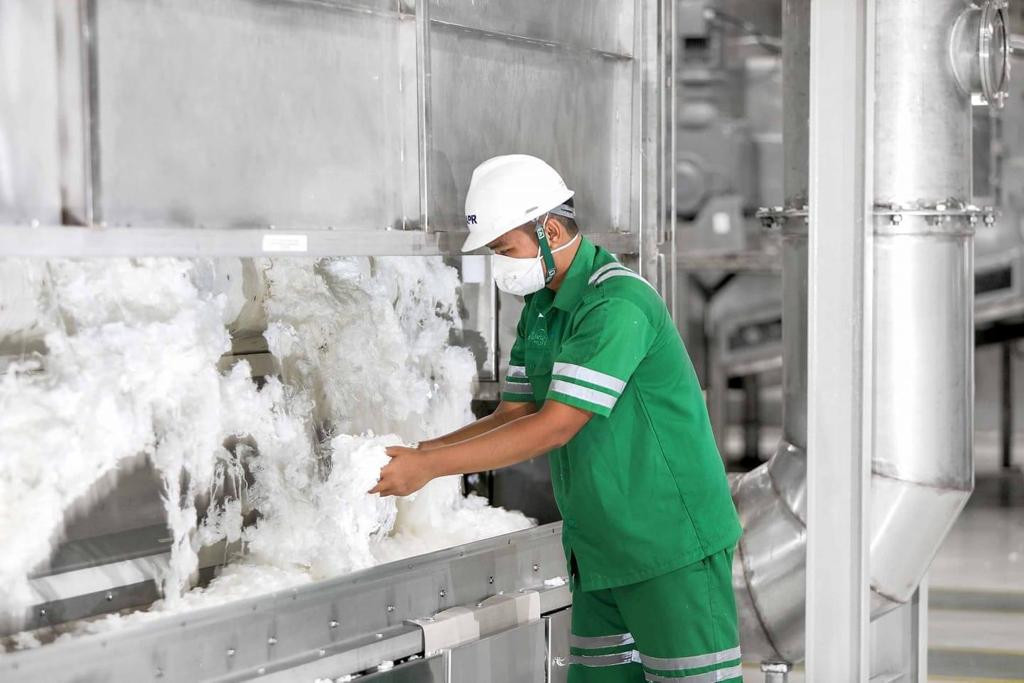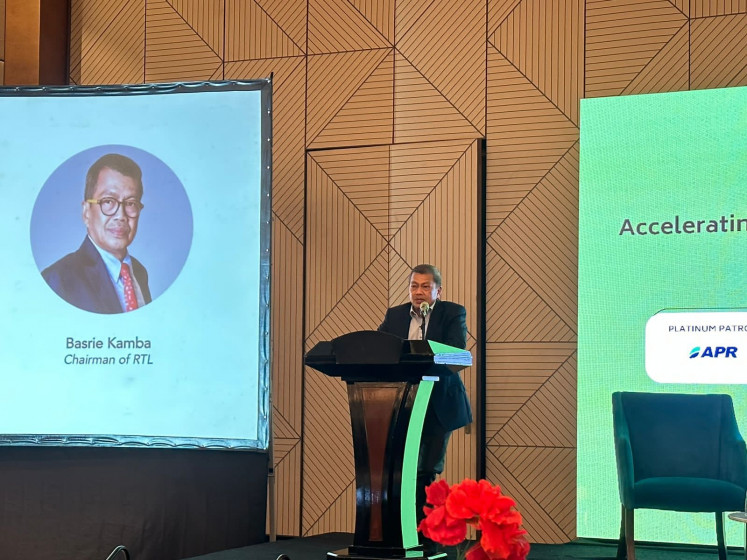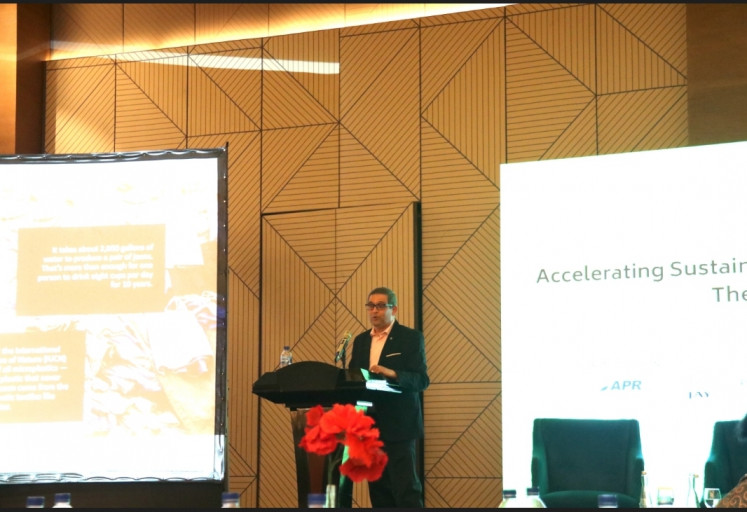Popular Reads
Top Results
Can't find what you're looking for?
View all search resultsPopular Reads
Top Results
Can't find what you're looking for?
View all search resultsAPR highlights sustainable practices in viscose rayon production
Change text size
Gift Premium Articles
to Anyone
A
s the world races to limit carbon emissions and reverse environmental damage, it is evident that the industry requires a collective approach to address these issues.
The fashion industry has exemplified one such approach, with initiatives like Zero Discharge of Dangerous Chemicals (ZDHC). ZDHC is a multi-stakeholder organization consisting of over 320 signatories from across the fashion industry, including brands, suppliers, solution providers, and chemical suppliers. This initiative aims to reduce the impact of manufacturing processes on human health and the environment.
Basrie Kamba, director of Asia Pacific Rayon (APR), and the chairman of Rantai Tekstil Lestari (RTL), Indonesia's first sustainable fashion alliance, expressed gratitude to ZDHC for their collaboration on a recent event. This collaboration is part of their collective efforts to engage stakeholders in ZDHC programs and drive positive change in Indonesia's textile, leather, and footwear industry.
. (Courtesy by April Group/.)
"We are honored to have such a diverse gathering of government officials, industry professionals, and experts who bring valuable perspectives and share best practices for a better Indonesia: a world-class industry with responsible operations and proven competitive advantages," Basrie stated during his opening remarks.
The global fiber, fabrics, and apparel industries, valued at approximately $2.3 trillion last year, face intense competition and an increasing number of guidelines, standards, and requirements. Zero discharge involves optimizing chemical recovery processes to limit the discharge of waste substances into the environment, emphasizing the treatment and reuse of chemicals. However, it requires capital expenditures, running costs for technology and expertise, and high energy consumption, potentially leading to significant greenhouse gas emissions.
Basrie emphasized the need to face these challenges and changes collaboratively, as the industry moves away from a fossil fuel-based economy towards renewable, bio-based alternatives. The global market for man-made cellulosic fibers (MMCF) is expected to grow due to consumer demand for sustainable and biodegradable fibers, with viscose comprising around 80 percent of all MMCFs in 2021, according to the Textile Exchange 2022 Preferred Fiber & Materials Market Report.
APR has set forth its APR2030 ten-year roadmap, encompassing four pillars: Climate and Nature Positive, Clean Manufacturing, Circularity, and Inclusive Prosperity. Saleel Rajaram Nayak, APR's general manager, expressed the company's firm commitment to these goals and its progress in achieving them.
Under this roadmap, the APR aims to achieve over 95 percent of sulfur recovery. APR reported to have reached 94 percent in sulfur recovery, and is aiming to boost the numbers to 95 percent later this year.
. (Courtesy by April Group/.)“The aspirational target for 2025 is a chemical recovery rate of 95 percent. I can say that we have achieved 94 percent in the past few months so we are close. And it is not just meeting this target, but also going beyond,” Saleel added.
In 2019, APR became a ZDHC signatory and participated in the wastewater trial that contributed to shaping the MMCF wastewater guideline commissioned by ZDHC in 2020.
By 2025, APR aims to achieve ZDHC's Aspirational level compliance for all parameters in the three MMCF Guidelines, covering responsible fiber production, wastewater, and air. Saleel highlighted that APR already meets all ZDHC parameters for consumption, with numbers surpassing the Progressive levels for emissions and recovery rates. The company is dedicated to continuous improvement to reach all Aspirational ZDHC levels, positioning APR among the top-rated companies among the signatories.
Transparency is a priority for APR, demonstrated by their dedicated sustainability dashboard, where visitors can monitor sustainability statistics such as freshwater consumption, chemical recovery rates, and air emissions













